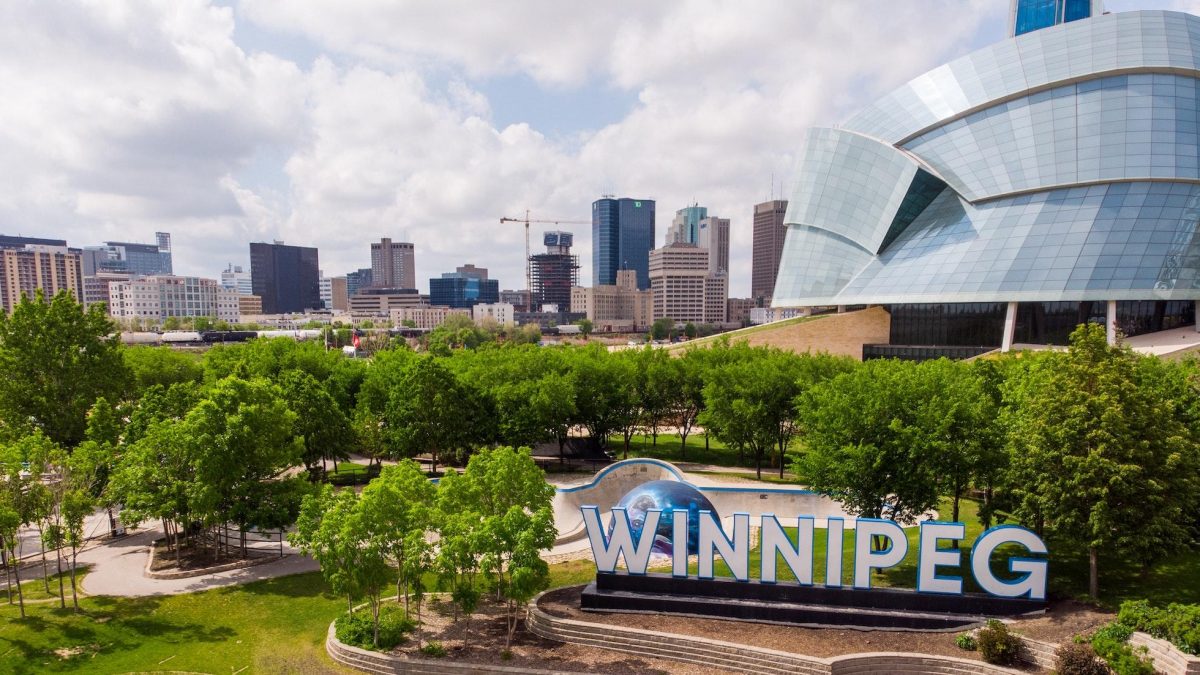From IISD's SDG Knowledge Hub
United Way Winnipeg and the International Institute for Sustainable Development (IISD) have published a report on local-level progress towards the SDGs in Winnipeg, the capital of Canada’s Manitoba Province. Winnipeg is the second municipality in Canada to conduct a voluntary local review (VLR), following Kelowna, British Columbia. The report takes a data-driven approach to the VLR process; the authoring organizations write that “it’s not enough to care about Winnipeg – we need to measure to really know how our community is doing.”
The Winnipeg VLR builds on the City’s interactive data dashboard, ‘Peg,’ which gathers official statistics on topics that people in Winnipeg have prioritized and translates the statistics into visual maps, charts and graphs. In previous years, United Way Winnipeg and IISD have released reports from the dashboard, but this is the first time the report is specifically designed to highlight progress on localizing the SDGs. The authors note that preparing a VLR is a way to use a shared language that is relevant globally as well as locally.
It’s not enough to care about Winnipeg – we need to measure to really know how our community is doing.
The report titled, ‘Winnipeg and the SDGs: A Voluntary Local Review of Progress 2021,’ offers an example for how other communities can replicate the process of establishing a community indicator system and using it to assemble a VLR. Where a community data project already exists, the report notes, preparing a VLR can take much less time.
While most VLRs are prepared by the municipal authority, Winnipeg’s VLR has been written by two NGOs, as the coordinators of the Peg dashboard project on which the report is based. The Mayor of Winnipeg observes in a foreword to the report that using data from Peg “allows us to see more clearly how we can move forward in recovery [from COVID-19] together, and where we need to focus our efforts to make sure that the same recovery is available to everyone.”
The VLR provides a statistics-based overview of Winnipeg’s progress towards 10 of the 17 SDGs: Goal 1 (no poverty), Goal 2 (zero hunger), Goal 3 (good health and wellbeing), Goal 4 (quality education), Goal 8 (decent work and economic growth); Goal 10 (reduced inequalities); Goal 11 (sustainable cities and communities); Goal 13 (climate action); Goal 16 (peace, justice and strong institutions); and Goal 17 (partnership for the Goals). Among the findings:
- SDG 2: Winnipeg’s largest food bank reported a 30% increase in demand since the pandemic began, and fewer donations. The authors note that Food Bank Use is not a comprehensive measure of food insecurity, and hope to gather new data in the future.
- SDG 3: Life expectancy has been improving for Winnipeg residents overall, but a wide gap exists between neighborhoods.
- SDG 10: The median household income varies widely between neighborhoods, estimated to be twice as high in some as in others.
- SDG 11: Active and public forms of transportation in Winnipeg have increased slightly since 2001.
- SDG 13: Per capita waste going to landfills rose by 28.7 kg per capita in 2021, possibly driven by people spending more time at home during the pandemic.
- SDG 17: The federal, provincial, and municipal governments are all working to align planning with the SDGs.
Reflecting on these findings, the authors note that “while we are making progress in some areas, we cannot yet say that no one has been left behind.” The report includes a chapter on Indigenous people’s human rights and truth and reconciliation, in the context of the SDGs. The authors observe that the indicators used in the dashboard for Winnipeg have limitations with respect to Indigenous peoples. A foreword by the organizations that lead Peg (United Way Winnipeg and IISD) notes that the project is committed to re-examining the indicators to reflect better understandings of identity, marginalization, and “the urgent journey of reconciliation with Indigenous peoples.” In general, the report looks to the way forward with a focus on additional work to set targets together as a community.
The authors note the guidelines they used to inform the VLR process: the United Cities and Local Governments and UN-Habitat’s Guidelines for Voluntary Local Reviews; and the Institute for Global Environmental Strategies’ (IGES) Shimokawa Method for Voluntary Local Reviews.
In 2019, New York City was among the first municipalities to submit a VLR to bring local-level SDG efforts to the global platform of the HLPF. A VLR “movement” has since arisen with hundreds of local, state, and other subnational reviews being conducted in line with the 2030 Agenda. In June 2021, UN Member States agreed on measures to strengthen the HLPF, including by giving more attention to bolstering local efforts for the SDGs, and encouraging the regional forums to discuss trends and findings from VLRs. In July 2021, the UN High-level Political Forum on Sustainable Development (HLPF) held a dedicated session on the role of cities and local authorities in SDG implementation, as part of its official programme. Speakers emphasized that many SDG targets can only be achieved through extensive local action. [Publication: Winnipeg and the SDGs: A Voluntary Local Review of Progress 2021] [DESA index of VLRs]

